3 Children; Married Twice; Wife; What’s Stephen Hawking Net Worth 2022?

Facts of Stephen Hawking | |
| Full Name: | Stephen Hawking |
|---|---|
| Birth Date: | January 8, 1942 |
| Age: | 82 years |
| Death Date: | March 14, 2018 |
| Gender: | Male |
| Profession: | Theoretical Physicist |
| Country: | United Kingdom |
| Horoscope: | Capricorn |
| Divorce | Elaine Mason (m. 1995–2006), Jane Hawking (m. 1965–1995) |
| Net Worth | $20 Million |
| Eye Color | Hazel |
| Hair Color | Light Brown |
| Birth Place | Oxford |
| Nationality | British |
| Ethnicity | White |
| Education | Trinity Hall Cambridge, University of Oxford |
| Father | Frank Hawking |
| Mother | Isobel Hawking |
| Siblings | Edward Hawking, Philippa Hawking, Mary Hawking |
| Kids | Lucy Hawking, Robert Hawking, Timothy Hawking |
| View more / View less Facts of Stephen Hawking | |
Contents:
- 1 Early Life of Hawking
- 2 Education Details of Hawking
- 3 Doctors Prediction on Hawking; Diseases
- 4 Father of 3 Children; Married Twice; Wife
- 5 Net Worth of Stephen Hawking At the Time of Death
- 6 Controversial Theories of Stephen Hawking
- 7 How Did Stephen Hawking Talk?
- 8 Hawking Research on Black Holes and the Universe
- 9 Personal View of Hawking’s on Future of Humanity
- 10 Stephen Hawking Movie and TV Appearances
- 11 Books of Stephen Hawking
- 12 What is the cause of Stephen Hawking Death?
- 13 Awards and Honours of Stephen
- 14 FAQs of Stephen Hawking
British scientist, Stephen Hawking is well-known for his work with holes and relativity theoretical. Also, he was the author of popular science books like ‘A Brief History of Time.’ He had performed groundbreaking work in physics and cosmology and helped to make science accessible to everyone.
Early Life of Hawking
Eldest son of parents Isobel Eileen Hawking (mother) and Frank Hawking (father) born on 8 January 1942 in Oxford. His mother earned her way into Oxford University in the 1930s when few women were able to go to college. Hawking’s father, another Oxford graduate, was a respected medical researcher with a specialty in tropical diseases.
Stephen had British nationality who belongs to the white ethnicity. He had two younger sisters, Philippa Hawking and Mary Hawking. Then the family adopted a brother, Edward Frank David. The family existence in a large, cluttered, and poorly maintained house and traveled in a converted London taxicab.
Education Details of Hawking
Stephen was recognized as bright in his early academic life but not an exceptional student. In the first year at St. Albans School, Hawking was third from the bottom of his class. He focused on pursuits outside of school & loved board games with his few close friends who created new games of their own.
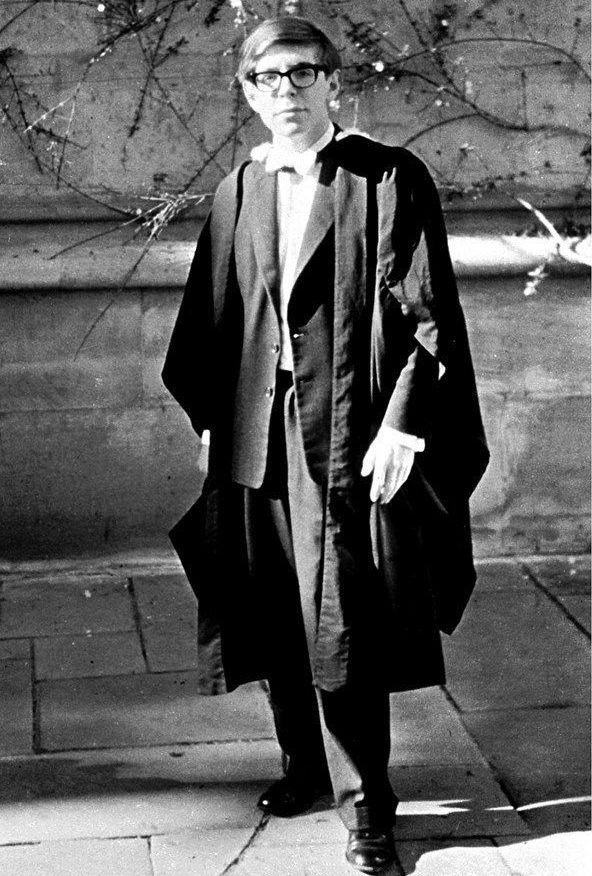
He along with several friends constructed a computer out of recycled parts for solving rudimentary mathematical equations during his teens. At the age of 17, he entered University College at the University of Oxford. Stephen expressed a desire to study mathematics although, Oxford didn’t offer a degree in that specialty. Then he gravitated toward physics and, more specifically, cosmology.
He graduated with honors in natural science in 1962. Then Hawking went on to attend Trinity Hall at the University of Cambridge for a Ph.D. in cosmology. He became a member of the Institute of Astronomy in Cambridge in 1968. For Stephen the next few years were a fruitful time for his research.

Then he published his first, highly technical book, The Large Scale Structure of Space-Time, with G.F.R. Ellis in 1973. Stephen found himself back at the University of Cambridge in 1979, where he was named to one of teaching’s most renowned poets, dating back to 1663: the Lucasian Professor of Mathematics.
Doctors Prediction on Hawking; Diseases
According to the doctor, he wouldn’t live past his early 20s. When he was only 21, Stephen was diagnosed with amyotrophic lateral sclerosis (ALS), or Lou Gehrig’s disease. ALS diseases affect the nerve cells involved involuntary muscle movement, decreasing a person’s ability to move and speak over time.
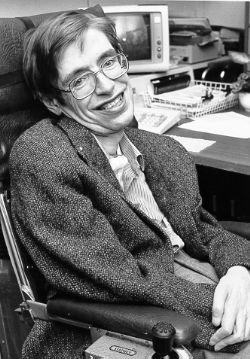
After the age of 50, symptoms develop and lead to death within a few months or years. Hawking with ALS at the extremely young age of 21, so the doctors predicted he would only live a couple of years. However, he lived for 55 more years
“The human race,” he said, “is so puny compared to the universe that being disabled is not of much cosmic significance.”
Father of 3 Children; Married Twice; Wife
The love story of Stephen started when he met his first wife Jane Wilde at a party in 1962. Then they started dating and fell in love with each other. In the year 1964, They got engaged aware of the challenges Hawking’s diagnosis would present. Hawking exchanged the wedding with Jane Wilde on July 14, 1965.
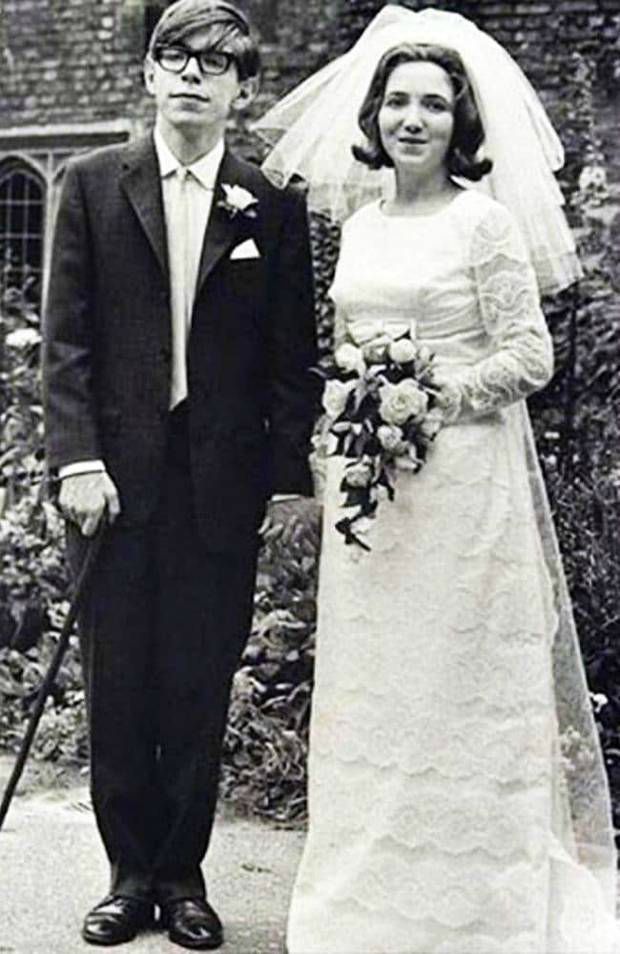
From their married life, Stephen became the father of three children. The couple was blessed with their first son Robert Hawking born in May 1967. Then they became parents of 2nd child daughter Lucy Hawking born on November 2, 1969, and 3rd kid a son Timothy Hawking born on April 15, 1979.
Then Jane felt overwhelmed by her husband’s popularity by the early 1980s. Stephen told Jane he was leaving her for one of his nurses, Elaine Mason in February 1990. He had grown close to over the preceding few years. Then he moved out of the family home and divorced Jane in 1995.

After the divorce, he married Mason in September 1995 as his 2nd wife. But his married life has a short ending. Hawking and Mason quietly divorced in the year 2006 resumed closer relationships with Jane, his children, and his grandchildren.
Net Worth of Stephen Hawking At the Time of Death
Stephen Hawking had collected a net worth estimated to be $20 million (£14.3m) at the time of his death. Most of his wealth came from his scientific research. Also, he earned the majority of wealth come from the sales of his incredibly popular book ‘A Brief History of Time’.
He won the Fundamental Physics Prize, whose $3 million (£1.8m) is the largest prize in science in 2012. Also, he earned a decent sum of money by making TV appearances and shows. He had lived a life of comfort when he was alive from his earning.
Controversial Theories of Stephen Hawking
Some of Hawking’s theories were controversial at first Despite these misplaced bets, Hawkins did get a lot of things right.
“Among his first theoretical discoveries was his prediction that black holes should radiate,” Larsen says. “But when he first came up with this idea and presented it to his colleagues, they thought it was rubbish.”
Also, one of his calculations for this theory went through scientific peer-review
“they found that yes, this is what the laws of physics as we understand them predict,” she says. “That black holes under the right circumstances should evaporate, should radiate.” This scientific concept is now known as “Hawking radiation,” and remains one of his biggest contributions to cosmology.
How Did Stephen Hawking Talk?
Stephen could still feed himself and get out of bed, but virtually everything else required assistance by the mid-1970s. Hawking’s speech had become increasingly slurred and only those who knew him well could understand him. He lost his voice for good following a tracheotomy in 1985.

Then he required 24-hour nursing care for the acclaimed physicist. Also, his ability to do his work pit in peril. California computer programmers had developed a speaking program that could be directed by the head or eye movement. Thanks to this invention, Hawking allowed selecting words on a computer screen that were then passed through a speech synthesizer.
He still had use of his fingers, selected his words with a handheld clicker at the time of its introduction. After all of his body control was gone, he directed the program through a cheek muscle attached to a sensor. With the help of program assistants, he continued to write at a prolific rate. Hawking’s work included numerous scientific papers, also information for the non-scientific community.

His health remained a constant concern in 2009 when he failed to appear at a conference in Arizona because of a chest infection. He was retiring after 30 years from the post of Lucasian Professor of Mathematics at Cambridge, was rushed to the hospital for being what university officials described as “gravely ill,” though he later made a full recovery in April 2009.
Hawking Research on Black Holes and the Universe
His research turned him into a celebrity within the scientific world when he showed that black holes aren’t the information vacuums that scientists had thought they were in 1974. He demonstrated that matter, in the form of radiation, can escape the gravitational force of a collapsed star in simple terms.
Then Roger Penrose another young cosmologist had earlier discovered groundbreaking findings of the fate of stars and the creation of black holes, which tapped into Hawking’s own fascination with how the universe began. Then the duo started working together to expand upon Penrose’s earlier work, setting Hawking on a career course marked by awards, notoriety, and distinguished titles that reshaped the way the world thinks about black holes and the universe.
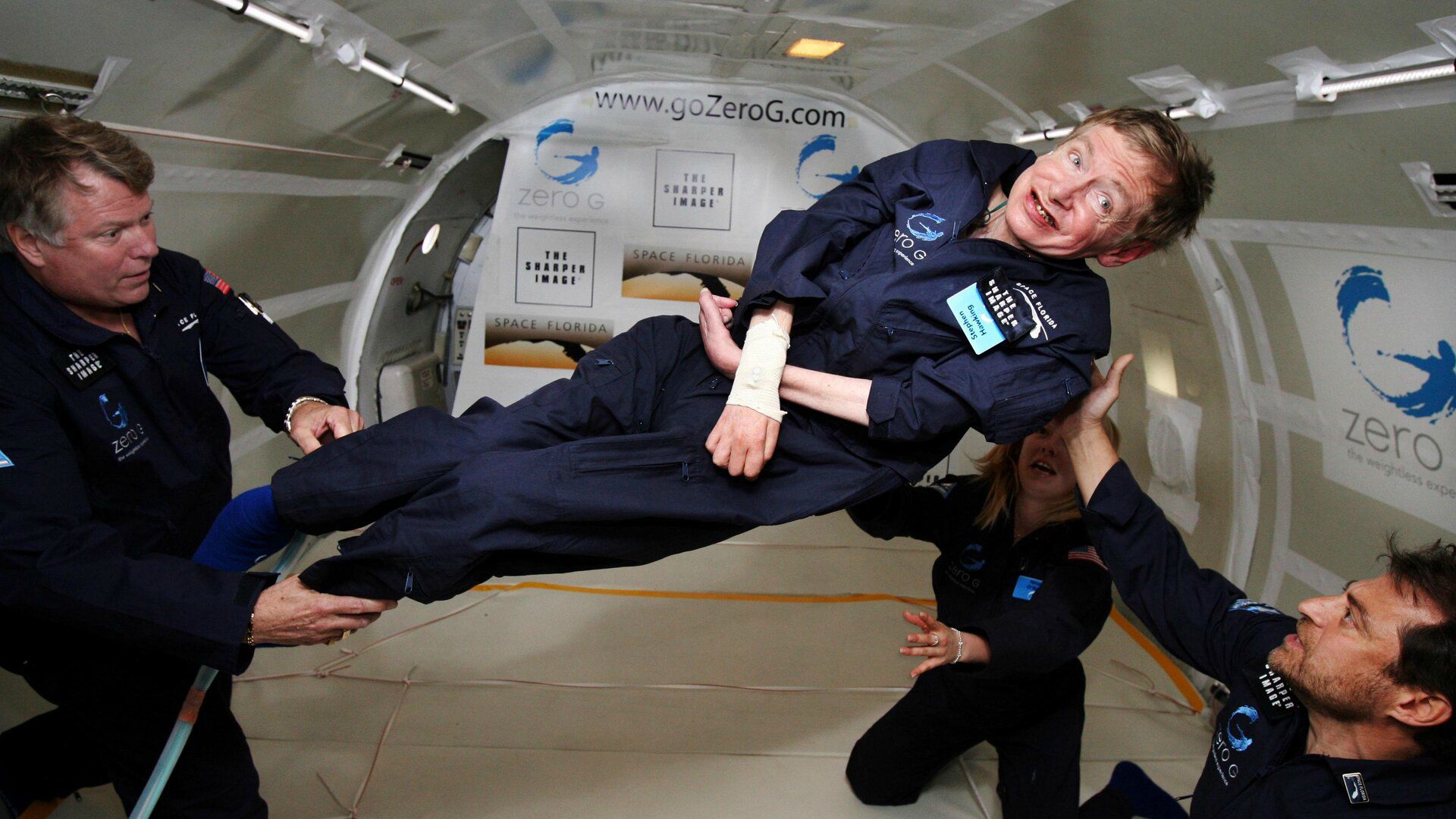
After his radiation theory was born, the announcement sent shock waves of excitement through the scientific world. At the age of 32, he was named a fellow of the Royal Society. Also, he earned the prestigious Albert Einstein Award, among other honors. Then Hawking earned teaching stints at Caltech in Pasadena, California, where he served as visiting professor, and at Gonville and Caius College in Cambridge.
He appeared at a conference in Sweden to discuss new theories about black holes and the vexing “information paradox” in August 2015. When addressing the issue of what becomes of an object that enters a black hole, he proposed that information about the physical state of the object is stored in the 2D form within an outer boundary known as the “event horizon.” Noting that black holes ” are not the eternal prisons they were once thought,” he left open the possibility that the information could be released into another universe.
Personal View of Hawking’s on Future of Humanity
Hawking posed an open question on the Internet in 2006,
“In a world that is in chaos politically, socially and environmentally, how can the human race sustain another 100 years?”, later clarifying: “I don’t know the answer. That is why I asked the question, to get people to think about it, and to be aware of the dangers we now face.””In a world that is in chaos politically, socially and environmentally, how can the human race sustain another 100 years?”, later clarifying: “I don’t know the answer. That is why I asked the question, to get people to think about it, and to be aware of the dangers we now face.”
Then he expressed concern that life on Earth is at risk from a sudden nuclear war, a genetically engineered virus, global warming, or other dangers humans have not yet thought of. He said,

“I regard it as almost inevitable that either a nuclear confrontation or environmental catastrophe will cripple the Earth at some point in the next 1,000 years”, and considered an “asteroid collision” to be the biggest threat to the planet. Such a planet-wide disaster need not result in human extinction if the human race were to be able to colonise additional planets before the disaster.”
Stephen viewed spaceflight and the colonization of space as necessary for the future of humanity. Then he stated that, given the vastness of the universe, aliens likely exist, but that contact with them should be avoided. Also, Hawking warned that aliens might pillage Earth for resources. In the year 2010, Stephen said;
“If aliens visit us, the outcome would be much as when Columbus landed in America, which didn’t turn out well for the Native Americans.”
He warned the world that superintelligent artificial intelligence could be pivotal in steering humanity’s fate.
“The potential benefits are huge… Success in creating AI would be the biggest event in human history. It might also be the last unless we learn how to avoid the risks.”
Also, he argued that we should be more frightened of capitalism exacerbating economic inequality than robots. He was concerned about the future emergence of a race of “superhumans” that would be able to design their own evolution and argued that computer viruses in today’s world should be considered a new form of life. Then, he stating that
“maybe it says something about human nature, that the only form of life we have created so far is purely destructive. Talk about creating life in our own image.”
Stephen Hawking Movie and TV Appearances
The scientist forays into popular culture included guest appearances on The Simpsons, Star Trek: The Next Generation, a comedy spoof with comedian Jim Carrey on Late Night with Conan O’Brien, and even a recorded voice-over on the Pink Floyd song “Keep Talking.”
In the year 1992, a documentary about Hawking’s life aptly titled A Brief History of Time released by Oscar-winning filmmaker Errol Morris. Stephen’s other TV and movie appearances included ‘The Big Bang Theory’ In 2012, Hawking showed off his humorous side on American television, making a guest appearance on The Big Bang Theory.
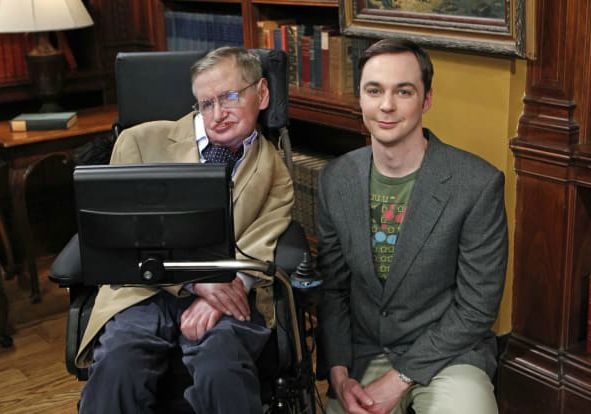
In 2011, he had participated in a trial of a new headband-styled device called the iBrain. According to an article in The New York Times, the device is designed to “read” the wearer’s thoughts by picking up “waves of electrical brain signals,” which are then interpreted by a special algorithm.
Then he featured Hawking on AI in 2014 among other top scientists, spoke out about the possible dangers of artificial intelligence, or AI, calling for more research to be done on all of the possible ramifications of AI. After that, he held a news conference in London to announce the launch of a project called Breakthrough Listen called Hawking and Aliens in July 2015.
Cambridge University posted Hawking’s 1965 doctoral thesis, “Properties of Expanding Universes,” to its website in October 2017. Breaking the Internet with the overwhelming demand for access promptly crashed the university server, though the document still fielded a staggering 60,000 views before the end of its first day online.
Books of Stephen Hawking
Over the years, Stephen wrote or co-wrote a total of 15 books. He had written five children’s books with his daughter Lucy. Some of his most noteworthy include;
‘A Brief History of Time’
Hawking catapulted to international prominence with the publication of “A Brief History of Time” in the year 1988. The book became informative of cosmology for the masses and offered an overview of space and time, the existence of God, and the future. He had to spend more than four years writing the books which became the London Sunday Times best-seller list. The book has been translated into more than 40 languages since its publication, it has sold millions of copies worldwide as well.

‘The Universe in a Nutshell’
He followed up his book with ‘The Universe in a Nutshell’ in 2001 which offered a more illustrated guide to cosmology’s big theories. Also “A Brief History of Time” wasn’t as easy to understand as some had hoped
‘A Briefer History of Time’
He authored the even more accessible A Briefer History of Time in 2005. It further simplified the original work’s core concepts and touched upon the newest developments in the field like string theory. These three books of Hawking’s own research and papers articulated the physicist’s personal search for science’s Holy Grail: a single unifying theory that can combine cosmology (the study of the big) with quantum mechanics (the study of the small) to explain how the universe began.
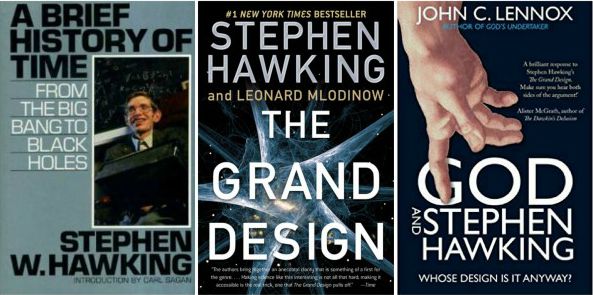
‘The Grand Design’
Stephen spoke against the idea that God could have created the universe in his book ‘The Grand Design’ in September 2010. Previously, he argued that belief in a creator could be compatible with modern scientific theories. Hawking concluded that the Big Bang was the inevitable consequence of the laws of physics and nothing more.
“Because there is a law such as gravity, the universe can and will create itself from nothing,” Hawking said. “Spontaneous creation is the reason there is something rather than nothing, why the universe exists, why we exist.”
What is the cause of Stephen Hawking Death?
Hawking’s prime cause of death is ALS, the disease that was supposed to have killed him more than 50 years earlier. On March 14, 2018, he died at his home in Cambridge, England at the age of 76. His death is confirmed by a family spokesman. News of Stephen’s death touched many in his field and beyond. On 31st March 2018, Hawking’s private funeral took place at Great St Mary’s Church, Cambridge.
At the funeral, many popular celebrities were included such as The Theory of Everything actors Eddie Redmayne and Felicity Jones, Queen guitarist and astrophysicist Brian May, and model Lily Cole. Despite being an atheist, his funeral took place with a traditional Anglican service. Following the cremation, on 15 June 2018, a service of thanksgiving was held at Westminster Abbey. In his memorial stone are the words “Here lies what was mortal of Stephen Hawking 1942–2018” and his most famed equation.

His final broadcast interview resulting from the collision of two neutron stars occurred in October 2017. Hawking final words to the world appeared posthumously, in April 2018, in the form of a Smithsonian TV Channel documentary entitled, Leaving Earth: Or How to Colonize a Planet.
His Children followed with a statement:
“We are deeply saddened that our beloved father passed away today. He was a great scientist and an extraordinary man whose work and legacy will live on for many years. His courage and persistence with his brilliance and humor inspired people across the world. He once said, ‘It would not be much of a universe if it wasn’t home to the people you love.’ We will miss him forever.”
Awards and Honours of Stephen
From his numerous scientific work, Hawking received numerous awards and honors. he was elected a Fellow of the Royal Society (FRS) in 1974.
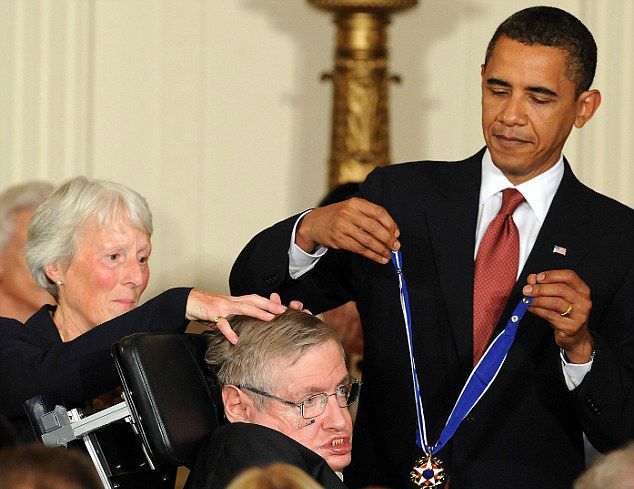
Hawking has made major contributions to the field of general relativity. These derive from a deep understanding of what is relevant to physics and astronomy, and especially from a mastery of wholly new mathematical techniques. Following the pioneering work of Penrose he established, partly alone and partly in collaboration with Penrose, a series of successively stronger theorems establishing the fundamental result that all realistic cosmological models must possess singularities. Using similar techniques, Hawking has proved the basic theorems on the laws governing black holes: that stationary solutions of Einstein’s equations with smooth event horizons must necessarily be axisymmetric; and that in the evolution and interaction of black holes, the total surface area of the event horizons must increase. In collaboration with G. Ellis, Hawking is the author of an impressive and original treatise on “Space-time in the Large”.
In 2015, he received the BBVA Foundation Frontiers of Knowledge Award in Basic Sciences shared with Viatcheslav Mukhanov for discovering that the galaxies were formed from quantum fluctuations in the early Universe. Also, Hawkings received the lifetime achievement award “for his contribution to science and British culture” in the 2016 Pride of Britain Awards.
FAQs of Stephen Hawking
Who is Stephen Hawking?
British scientist, Stephen Hawking is well-known for his work with holes and relativity theoretical. Also, he was the author of popular science books like ‘A Brief History of Time.’ He had performed groundbreaking work in physics and cosmology and helped to make science accessible to everyone.
When was Stephen Hawking born?
Eldest son of parents Isobel Eileen Hawking (mother) and Frank Hawking (father) born on 8 January 1942 in Oxford. His mother earned her way into Oxford University in the 1930s when few women were able to go to college. Hawking’s father, another Oxford graduate, was a respected medical researcher with a specialty in tropical diseases.
How many siblings does Stephen Hawking have?
Stephen had British nationality who belongs to the white ethnicity. He had two younger sisters, Philippa Hawking and Mary Hawking. Then the family adopted a brother, Edward Frank David. The family existence in a large, cluttered, and poorly maintained house and traveled in a converted London taxicab.









